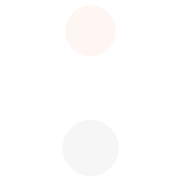When “Cool” is the Wrong Goal
The confusion between design and art has been around for a long time. To prove my point, even in most education systems around the world, the design disciplines are firmly associated with the art departments of those institutions. The lines between the two are blurred and it does not help that both are visual disciplines using similar toolsets to express themselves. It is confusing that art and design use the same building blocks.

Furthermore, creativity is a key component for both professions and, like artists, designers use drawing and sketching as a way of creative thinking. But for designers the process is more similar to a mathematician working out equations on a blackboard while for an artist the medium is used to interpret inner emotions. The overlap is even more confusing as both fields use a non-linear process that includes trial and error to get to the final solution.

But art and design are two different fields and while they use similar instruments and instill creativity and emotion in their work, they do so for fundamentally different reasons. When art and design are confused it limits both crafts; artists will be held back in their freedom of expression and design becomes just limited to style and appearance.
Yet it is a common mistake for people to think that designers make things look beautiful. When style becomes the ultimate goal of design huge opportunities are missed. Yes there is nothing wrong with something ending up ‘clean’ and ‘beautiful’ but proper aesthetics should be looked at as a positive side effect of good design, not its main purpose.

Art takes exploratory leaps and courageously challenges the norms. It is a personal expression that comes from deeply within the artist. It provokes feelings such as admiration, shock, confusion and even disgust. Art is intrinsically controversial. Design aims to improve on the existing; it is calculated and depends on external factors. Design is about function; it observes and incrementally improves upon the current.
One of my professors used to repeat: “if you want to make something that you admire and you are emotionally invested in, don’t become a designer. Become an artist.” Still, designers do inject their own experience and creativity in their work but they must clearly do so with the target audience and functionality in mind. As designers we quickly learn that “pretty” cannot be the project goal. Design exists to solve a problem, to fill a purpose.

When management teams misinterpret design to be art, chances are that projects end up being creative just for the sake of making things look appealing. This is too shortsighted and will greatly reduce the success of a product. Taking such narrow view may shorten the design schedule but it will jeopardize the project as the focus is not placed on satisfying a need.
When aesthetics is the main driver, a product may end up looking great while performing mediocrely; we all have encountered ‘design’ chairs that are uncomfortable or ‘clean’ kitchen tools that underwhelm in performance. Design cannot afford to be so superficial; if it is, it will result in bad design.

On the other hand, not instilling a product with aesthetics is also dangerous as that may result in indifference. When a product is only usable it also misses something. It will not tell the proper story to attract the attention of the intended audience. Good design combines function with excitement so that it becomes emotionally fulfilling for the target user. The total package will not only be usable, it will be interesting, it will be desirable, it will make sense.

So design has the highest chances for success when aesthetics are there to serve function, not the other way around. Great design is part science, part process, part solution and part aesthetics. Style must be derived from the functional aspect of a project and it is there to tell a story to the right target market. To claim that design should solely concern itself with function and improving on the existing is wrong. Yes a product that functions properly may do well but one that is both functional and aesthetically pleasing to the targeted audience will be infinitely more successful.



